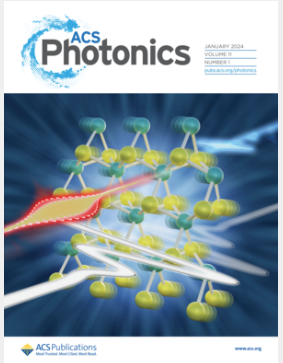Enhanced Performance of Single-Photon Emitter Hosted in Hexagonal Boron Nitride via Two-Photon Excitation
IF 6.5
1区 物理与天体物理
Q1 MATERIALS SCIENCE, MULTIDISCIPLINARY
引用次数: 0
Abstract
In the rapidly advancing field of quantum photonics, precise control of single-photon emitters (SPEs) is essential for the development of quantum technologies such as quantum computing, quantum communication, and quantum sensing. While single-photon excitation is widely used for SPEs, research on two-photon excitation is still limited, and its excitation mechanism remains unclear. In this study, we propose a mechanism for two-photon excitation involving two-photon absorption, excited-state reabsorption, radiative transitions, and nonradiative decay processes and also explore the low-temperature photophysical properties of the SPE hosted in hexagonal boron nitride under both single-photon and two-photon excitation conditions. Our findings demonstrate that under two-photon excitation, the SPE exhibits increased emission efficiency and decreased nonradiative losses, specifically manifested in narrower photoluminescence (PL) spectral line width, extended PL lifetime, and more robust PL emission, addressing key performance challenges of SPEs. Additionally, we provide insights into the underlying mechanisms that drive these improvements, offering a deeper understanding of how two-photon excitation enhances the photophysical properties of the SPE. This study highlights the potential of two-photon excitation to enhance the performance of the SPE and provides valuable insights for future quantum technology applications.

通过双光子激发提高六方氮化硼中的单光子发射器性能
在飞速发展的量子光子学领域,单光子发射器(SPE)的精确控制对于量子计算、量子通信和量子传感等量子技术的发展至关重要。虽然单光子激发被广泛应用于 SPEs,但双光子激发的研究仍然有限,其激发机制仍不清楚。在这项研究中,我们提出了一种双光子激发机制,其中涉及双光子吸收、激发态重吸收、辐射跃迁和非辐射衰变过程,并探讨了在单光子和双光子激发条件下,寄存在六方氮化硼中的 SPE 的低温光物理特性。我们的研究结果表明,在双光子激发条件下,SPE 表现出更高的发射效率和更低的非辐射损耗,具体表现为更窄的光致发光 (PL) 光谱线宽、更长的光致发光寿命和更稳定的光致发光发射,从而解决了 SPE 的关键性能挑战。此外,我们还深入探讨了推动这些改进的内在机制,加深了对双光子激发如何增强 SPE 光物理特性的理解。这项研究强调了双光子激发在提高 SPE 性能方面的潜力,并为未来的量子技术应用提供了宝贵的见解。
本文章由计算机程序翻译,如有差异,请以英文原文为准。
求助全文
约1分钟内获得全文
求助全文
来源期刊

ACS Photonics
NANOSCIENCE & NANOTECHNOLOGY-MATERIALS SCIENCE, MULTIDISCIPLINARY
CiteScore
11.90
自引率
5.70%
发文量
438
审稿时长
2.3 months
期刊介绍:
Published as soon as accepted and summarized in monthly issues, ACS Photonics will publish Research Articles, Letters, Perspectives, and Reviews, to encompass the full scope of published research in this field.
 求助内容:
求助内容: 应助结果提醒方式:
应助结果提醒方式:


